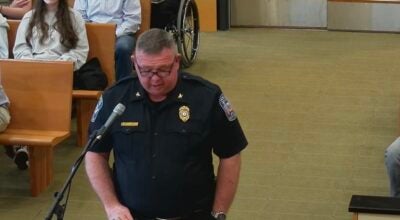Historic Register For First Baptist
Published 4:52 pm Tuesday, January 8, 2013
RICHMOND – The story of education for African Americans and women in Virginia factors into five of the sixteen sites the Department of Historic Resources recently listed in the Virginia Landmarks Register, the state's official list of historically important places.
And one of the sites is First Baptist Church, in Farmville, the department announced this week.
First Baptist Church, founded 1867, emerged as a center for the local black community under the leadership of its pastor, the Reverend L. Francis Griffin, when it sought to desegregate Prince Edward County's public schools during the 1950s and 1960s.
Within weeks of an April 1951 student strike at Robert Russa Moton High School against separate and unequal facilities for black students, Rev. Griffin successfully led efforts at the church to get youth, parents, and community leaders to support an NAACP lawsuit against segregation, the state explains in a press release announcing the historic designation.
That federal suit filed in May 1951 as Davis v. County School Board of Prince Edward County, Virginia was consolidated with four others into the landmark 1954 Brown v. Board of Education case that resulted in the U.S. Supreme Court outlawing public school segregation.
Rev. Griffin also pushed to get a privately funded and administered school opened in September 1963 to serve the county's black students, after Prince Edward County closed its public schools beginning in September 1959 to avoid integration. In September 1964 the county integrated its schools after the Supreme Court ruled against it in Griffin v. County School Board of Prince Edward County.
First Baptist Church was visited by the late Dr. Martin Luther King, Jr., and is one of the key sites on the Civil Rights In Education Heritage Trail, which is anchored by the Moton Museum.
The church was approved for listing in the Virginia Landmarks Register by the Board of Historic Resources during its December 13 quarterly meeting. At that meeting DHR's State Review Board also approved forwarding the listings to the National Park Service for nomination to the National Register of Historic Places.
Listing a property in the state or national register places no restrictions on what a property owner may do with his or her property.
Designating a property to the state or national registers- either individually or as a contributing building in a historic district-provides an owner the opportunity to pursue historic rehabilitation tax credit improvements to the building. Such tax credit projects must comply with the Secretary of Interior's Standards for Rehabilitation.
Virginia is a national leader among states in the U.S. in listing historic sites and districts in the National Register of Historic Places. The state is also a national leader for the number of federal tax credit rehabilitation projects proposed and completed each year.
Together the register and tax credit rehabilitation programs have played significant roles in promoting the conservation of the Commonwealth's historic places and in spurring economic revitalization and tourism in many towns and communities.




